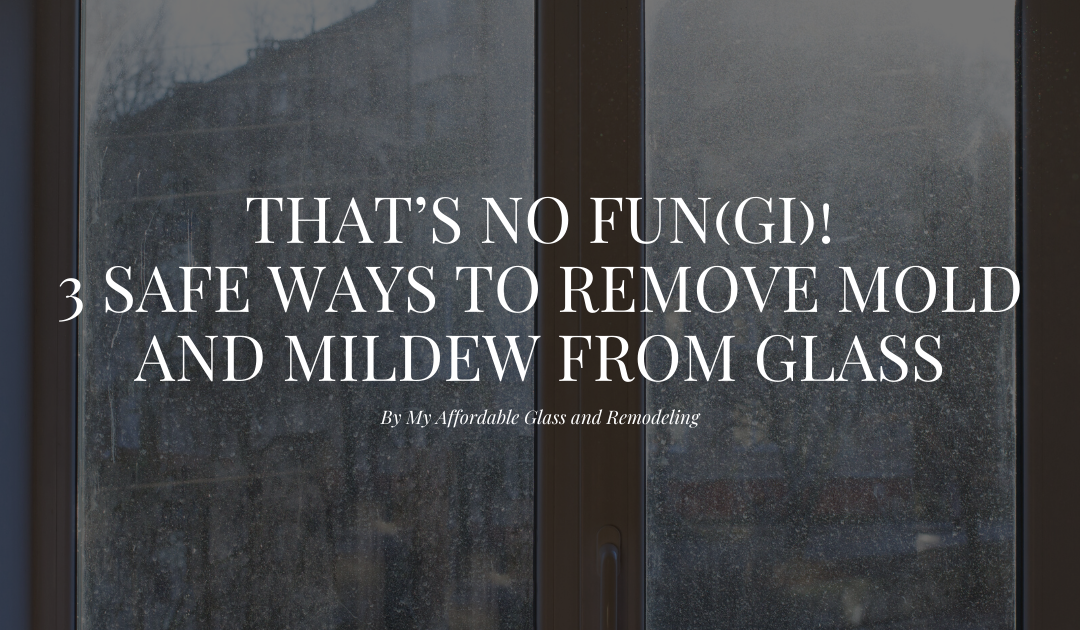Without question, the Dallas area can get HOT. When temperatures rise, it can cause humidity, which can lead to moisture. In some places, that moisture can become a breeding ground for mold and mildew to grow. Two areas of the home that often get hit are windows and bathroom glass (such as mirrors and frameless shower doors). Not only does household fungus cause stubborn stains, it could potentially lead to health problems, particularly for people with weak or compromised immune systems.
Gross? Sure. Common? Definitely. Easy to remove? Thankfully, yes. If you’ve noticed the presence of mold or mildew in and around your home, here’s what you can do to get rid of the problem once and for all.
What Causes Mildew and Mold on Glass
Because glass isn’t an organic material, it doesn’t typically provide a great place for mold to grow. The materials surrounding the glass, however – such as window frames and shower walls – are often made from organic materials. This fact, coupled with the accumulation of dirt, dust and moisture, can create the perfect breeding ground for mold and mildew.
What Does Mold and Mildew Look Like?
Mildew and mold are both typically identified by their appearance. Mold may appear in a number of different shades, though it is most commonly green or black. Mildew, on the other hand, is generally white in color. Either of these fungi may appear on the surface as a thin stained layer of bacteria. If not addressed right away, mold and mildew can continue to grow and spread. This is especially the case in environments where moisture is present, such as the bathroom.
Getting Rid of Mold and Mildew
Fungus removal can be a challenging task, but it can be done – and often without the need to hire an outside company. In fact, there are a number of products on the market today that are designed to tackle mold and mildew issues. If you’d prefer to go the more natural route, there are some homemade DIY concoctions that can work just as well, without all the harsh chemicals. Here are a few to consider:
Chlorine Bleach or Hydrogen Peroxide
Hydrogen peroxide can be highly effective in removing bacteria and viral fungi. Chlorine bleach typically contains the same solution of hydrogen peroxide and has strong oxidizing properties. Not only does this effectively remove the fungus, but it also cleans, disinfects and sterilizes the glass surface. This solution has even been proven to be effective in removing stubborn black mold.
Baking Soda
Baking soda is another common household item that can be highly effective in removing mold and mildew from glass. Best of all, this method is non-toxic, so it’s perfect for homes where children or pets are present. Simply mix a small amount of baking soda with water until it forms a paste. Apply the paste to the area in question and wipe it away. Not only does this strategy remove the mold and mildew, but it also helps to absorb any residual moisture, preventing the problem from recurring.
Vinegar
Because vinegar is a mild acid, it is capable of effectively killing more up to 82% of fungi that can grow on glass surfaces, like windows and shower enclosures. White distilled vinegar, either used as is or diluted with water, can simply be sprayed onto the surface in question and gently wiped clean.
Have glass surfaces that just don’t seem to come clean, no matter how hard you scrub? Perhaps it’s time to consider replacement. Our frameless shower enclosures are easy to keep clean and add a touch of elegance to any bathroom, while our replacement windows are designed to stand the test of time. Contact us for more information or to request a free, no-obligation quote!

